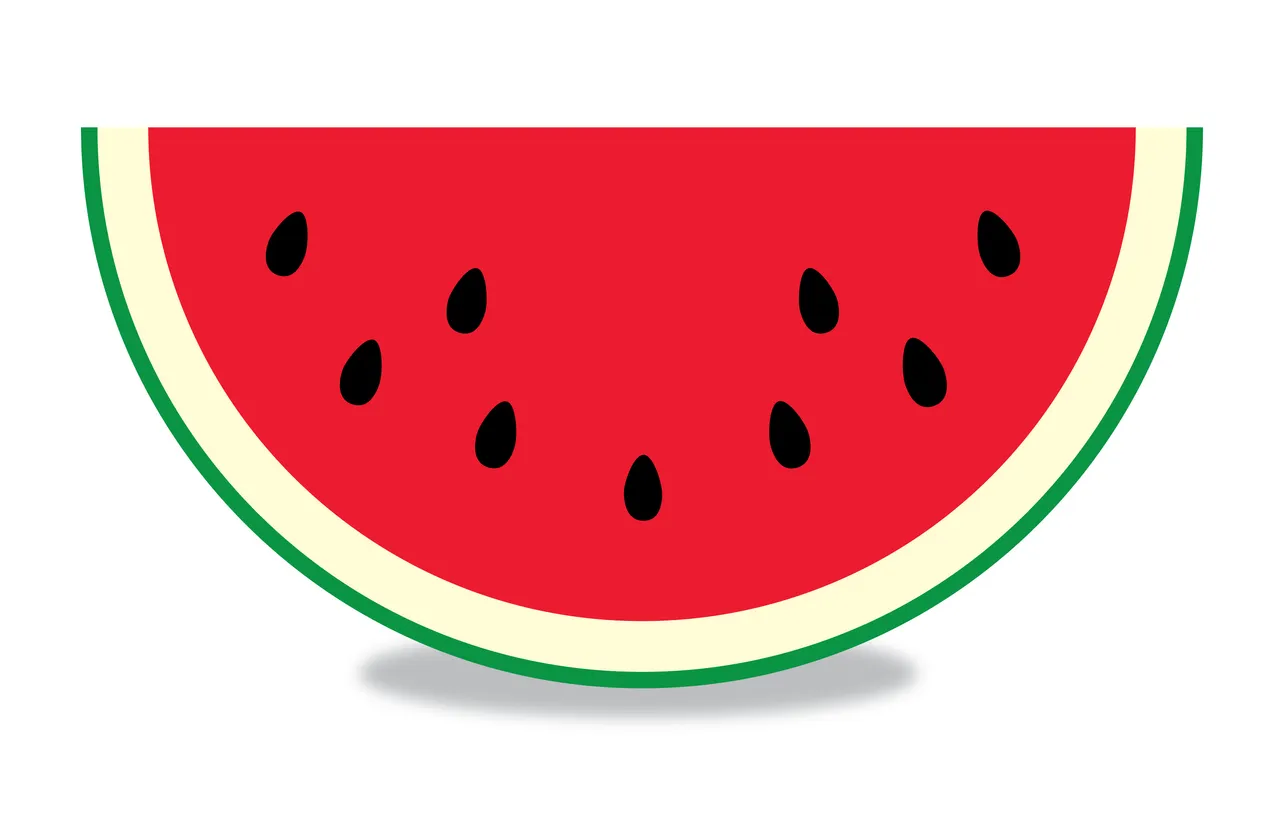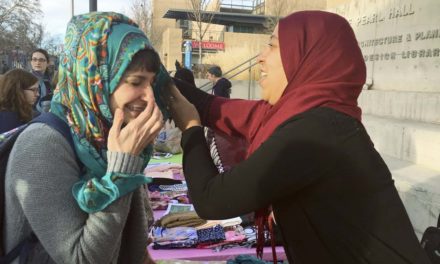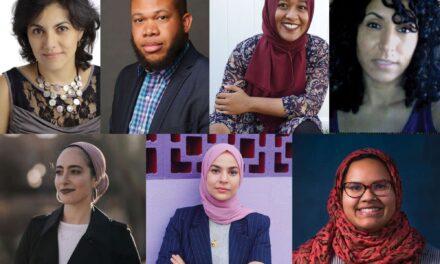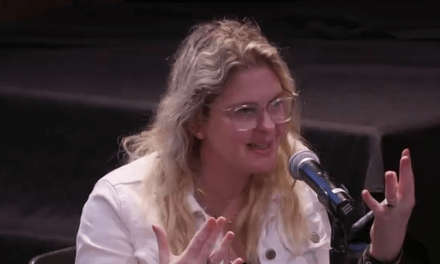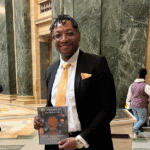If you get any of your news from social media, you have probably seen journalists refer to the ongoing genocide in Gaza through a series of skull emojis and watermelons.
Sadly, this is now a common approach on social media for journalists and content creators who want to talk about Israel’s ongoing genocide in Gaza. First, we need a hook to stop the relentless scroll—past the Instagram influencers lounging by infinity pools and Andrew Tate-wannabes selling “get rich quick” schemes that the algorithm inevitably prioritizes. Next, we need to circumvent the platform’s community guidelines—which flag discussions of death, killing, or murder as “violent and graphic content.” Given that genocide is all of these things, gravestone or skull emojis have become a stand-in for Israel’s mass slaughter of more than 35,000 Palestinians in Gaza. The watermelon is a nod to the Palestinians who once brandished watermelons (green, black, and red in color) in defiance of the Israeli government’s 1967 ban on public displays of the Palestinian flag in Gaza and the West Bank following the Six-Day War.
This time, those silencing us are the social media overlords—and our resistance is emojis.
As a journalist, I find this deeply alarming. Not only must we create content to capture an audience with an attention span that lasts just a few seconds, but we are also forced to normalize a form of censorship that prioritizes pleasing the algorithmic gods over engaging in honest conversations about important social justice topics, such as white supremacy and settler colonialism. In a world where content creators are taking the reins from journalists, and mass media layoffs are justified by audiences’ preference for accessing news content on social media, I wonder where this leaves the future of serious, hard-hitting journalism.
I have personally experienced the highs and lows of using Instagram as a tool to report on the war in Gaza. As a journalist who cut her teeth as a foreign correspondent covering Palestinian demonstrations against the Israeli occupation in the West Bank, I saw the Oct. 7 attacks as an opportunity to help my followers understand the broader context of the Israeli occupation of Palestine. I created videos about Israel’s bombardment of Gaza and how to fight antisemitism—helping viewers distinguish the critical differences between being antisemitic, anti-Israel, and anti-Zionist. I hoped that this variety of videos could engage a nuanced and enlightening conversation where my audience felt safe to ask questions and learn. Most importantly, I wanted to reach an audience who may not otherwise access this information.
Some of my videos went “viral”—a happy accident in which a video hits the algorithmic sweet spot in such a way that it pushes it out to thousands of viewers. Many viewers engaged with the videos, asking thoughtful questions and thanking me for the information. At its best, it felt like exactly what journalism is supposed to be—a public square where we can engage with our audience and serve them the information that they need to be better informed.
But as time wore on, I started to notice that many of my videos had the “engagement” needed to go viral but had far fewer viewers than creators making content about less “controversial” topics. A lifestyle influencer would have one million views on a video of herself preparing a smoothie, while my explainer on the increasing risk of famine in Gaza would have similar engagement but only 5,000 views. Human Rights Watch published a report that, in part, found Meta is censoring content related to Palestine and was flagging the use of the Palestinian flag emoji as terrorist content. It was then that I realized my videos were likely being buried because I refused to write “P@lestine” as if it was some kind of a swear word, or refer to a genocide with a skull and crossbones emoji.
According to the algorithm, I might be a terrorist.
I am not the only one. Many Palestinian journalists in Gaza report that their content, some of which documents the genocide in real time, is being buried or removed, often flagged as “inappropriate” or “sensitive” for depicting violence. Journalists and activists outside of Palestine who are using Instagram to raise money to help evacuate friends and family stuck inside Gaza similarly report that Meta threatens to hide or delete their account as punishment for violating community guidelines.
Nevertheless, Palestinian journalists continue to publish creative and innovative content despite working in the harshest of conditions that most Western journalists could never imagine. Journalists like Bisan Owda, a 25-year-old activist and content creator who has become a Peabody Award-winning war reporter, interviewed Gazans who lost their families and homes about how they planned to celebrate Eid among the rubble. Twenty-two-year-old Plestia Alaqad jumped on the “what’s in my bag” trend to show her followers what she packed to flee Gaza during the genocide.
Still, I wonder about the future of journalism when journalists themselves are beholden to algorithms that prefer “get ready with me” videos over war reporting. Creators across the platform grab us with “visual hooks,” opening videos by putting on lip gloss or shaking the camera to get more views and increase watch times—and yet, when Palestinian journalists do this to show us the reality of a war zone, their content is quietly buried or deleted. Even though videos from social media were used as evidence at the International Court of Justice that Israel has committed acts that violate the Genocide Convention, Palestininan journalists in Gaza have backup accounts in case they are banned from posting or all of their content gets deleted.
Of course, social media silencing is just one form of censorship. Over the past seven months, Israel has killed at least 105 journalists and media workers—that is more than the number killed during the Vietnam War that lasted two decades. This number does not include the journalists who are buried under rubble or have been wounded, arrested, or otherwise threatened by Israel. Mainstream news outlets in the West are also censoring Palestinian voices—the Los Angeles Times punished a group of journalists who signed a letter condemning Israel’s killing of journalists in Gaza by prohibiting them from covering Gaza. The New York Times instructed its reporters to avoid using terms like “genocide,” “ethnic cleansing,” and “refugee camp” when covering Israel’s war on Gaza. Earlier this month, the Israeli government closed Al Jazeera Media Network’s operations in Israel.
Platforms like Instagram could help serve as an alternative to the mainstream media and help journalists shine a light on the truth. They could take pride in the Palestinian journalists and creators around the world who are using them as a tool to break through the noise and expose Israel’s atrocities in Gaza.
Instead, social media only helps people to look the other way during a genocide.
